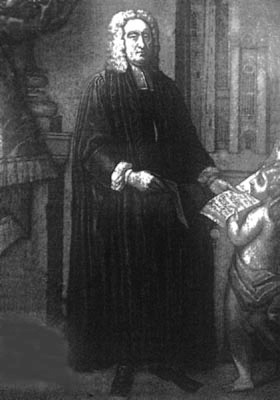This article contains information about the literary events and publications of 1708.
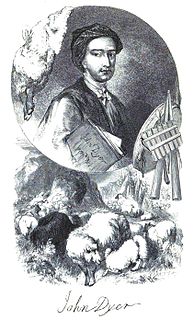
John Dyer was a painter and Welsh poet who became a priest in the Church of England. He was most recognised for Grongar Hill, one of six early poems featured in a 1726 miscellany. Longer works published later include the less successful genre poems, The Ruins of Rome (1740) and The Fleece (1757). His work has always been more anthologised than published in separate editions, but his talent was later recognised by William Wordsworth among others.
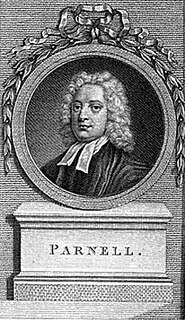
Thomas Parnell was an Anglo-Irish poet and clergyman who was a friend of both Alexander Pope and Jonathan Swift.
William Diaper (1685–1717) was an English clergyman, poet and translator of the Augustan era. Having taken the wrong political side at a time of regime change, he lost the patrons who were advancing his career and died in obscurity shortly afterwards.
Anne Barrett Rouse is an American-British poet. Along with Michael Donaghy and Eva Salzman, she has been cited as a noted American-British contributor to contemporary British poetry.
Nationality words link to articles with information on the nation's poetry or literature.
Nationality words link to articles with information on the nation's poetry or literature.
Nationality words link to articles with information on the nation's poetry or literature.
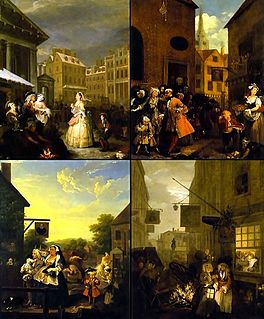
"A Description of a City Shower" is a 1710 poem by Anglo-Irish poet Jonathan Swift. First appearing in the Tatler magazine in October of that same year, the poem was considered his best poem. Swift agreed: "They think 'tis the best thing I ever wrote, and I think so too". Bonamy Dobrée found it "emancipatory, defiantly anti-poetic... describing nothing that the common run of poets would seize on."
Goronwy Owen was one of the 18th century's most notable Welsh poets. He mastered the 24 traditional bardic metres and, although forced by circumstances to be an exile, played an important role in the literary and antiquarian movement in Wales often described as the Welsh Eighteenth Century Renaissance. A perfectionist who only published reluctantly and whose literary output is consequently relatively small, his work nevertheless had a huge influence on Welsh poetry for several generations and his poetry and tragic life gave him a cult status in Welsh literary circles.

Michael O'Neill was an English poet and scholar, specialising in the Romantic period and post-war poetry. He published four volumes of original poetry; his academic writing was praised as "beautifully and lucidly written".
Mary Jones was an English poet.
Elizabeth Hands was an English poet.
William Dunkin, D.D. (1709?–1765), was an Irish poet.
John Morphew was an English publisher. He was associated with significant literary and political publications of the early 18th century. At one point publishing for both Whig and Tory factions, he later became identified with the Tories.
William Harrison (1685–1713) was an English poet and diplomat.
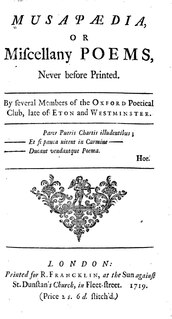
A miscellany is a collection of various pieces of writing by different authors. Meaning a mixture, medley, or assortment, a miscellany can include pieces on many subjects and in a variety of different forms. In contrast to anthologies, whose aim is to give a selective and canonical view of literature, miscellanies were produced for the entertainment of a contemporary audience and so instead emphasise collectiveness and popularity. Laura Mandell and Rita Raley state:
This last distinction is quite often visible in the basic categorical differences between anthologies on the one hand, and all other types of collections on the other, for it is in the one that we read poems of excellence, the "best of English poetry," and it is in the other that we read poems of interest. Out of the differences between a principle of selection and a principle of collection, then, comes a difference in aesthetic value, which is precisely what is at issue in the debates over the "proper" material for inclusion into the canon.

The novel of circulation, otherwise known as the it-narrative, or object narrative, is a genre of novel common at one time in British literature, and follows the fortunes of an object, for example a coin, that is passed around between different owners. Sometimes, instead, it involves a pet or other domestic animal, as for example in Francis Coventry's The History of Pompey the Little (1751). This and other such works blended satire with the interest for contemporary readers of a roman à clef. They also use objects such as hackney-carriages and bank-notes to interrogate what it meant to live in an increasingly mobile society, and to consider the effect of circulation on human relations.
Mehetabel Wesley Wright was an English poet. She was a member of the influential religious Wesley family.
The Negro's Complaint is a poem by William Cowper, which talks about slavery from the perspective of the slave. It was written in 1788. It was intended to be sung to the tune of a popular ballad, Admiral Hosier's Ghost.
